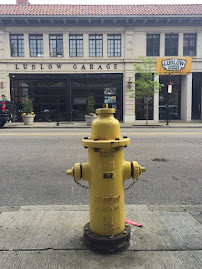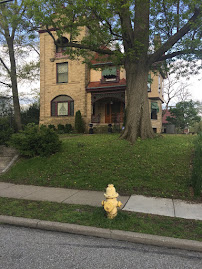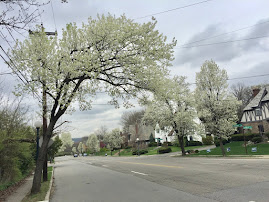Dear
George,
We’ve always been ardent
movie fans. I’m going to guess
that, between theater showings and TV reruns, I’ve seen about 5,000 movies in
my life. Movies provide us with
culturally meaningful depictions of the world, and, in doing so, they
incorporate subtle and not-so-subtle messages about how societal members should
and should not think and behave.
Over the years, I’ve become convinced that the most pervasive themes in
movies have to do with gender roles and relationships. Movies teach children and adults
constant lessons about what women and men “ought to be like” in terms of
cultural norms. By and
large, most Hollywood creations draw upon and reinforce traditional stereotypes
and, by contemporary standards, are blatantly sexist. Thus, when we think of legendary male movie stars over the
years (e.g., Brando, Cagney, Clark Gable, Bogart, Gary Cooper, Clint Eastwood),
we think of characters who embody so-called “masculine” traits of power,
independence, courage, capacity for aggression, and emotional control. In particular, men spend a lot of time
killing one another. Female actors
are more likely to play subordinate roles as love and/or sexual objects for the
male hero. For the most part,
legendary cinema actresses (e.g., Jean Harlow, Greta Garbo, Marilyn Monroe,
Rita Hayworth, Sophia Loren) were physically beautiful, sexually appealing, and
played romantic partners to their dominant male counterparts. It’s hard to over-estimate the impact
of these media images on our ways of viewing the world. I’m often struck that I’ve spent more
time over the years, at least symbolically, with Johnny Carson, Joan Rivers,
John McEnroe, Elizabeth Taylor, etc., than with most friends or family
members. We can still see plenty
of traditional gender roles when we go to the Cineplex in 2015, but stereotypes
were more blatant in Hollywood pictures in my youth in the 1940’s. I do have to admit that my heart still
speeds up when I see a photo of Lana Turner or Rita Hayworth. Here are some of the most popular
Hollywood actresses from those bygone days. They led extraordinary and often tragic lives.
Love,
Dave
Lana
Turner
Lana
Turner (nee Julia Jean Turner) was born in Idaho in 1921 to an Alabama miner
and his 16-year-old wife. Her
father was murdered after a craps game when she was 9, and her mother worked 80
hours a week as a beautician in L.A. to support them. According to legend, Turner was discovered at age 16 when
she skipped her Hollywood High School typing class to get a coke at the Top Hat
Malt Shop on Sunset Boulevard. She
soon became a glamorous star in teen-oriented films. The Postman Always Rings Twice (1946) provided Turner’s breakthrough role, and she
followed it with big successes in Homecoming (1948), The Bad and the Beautiful (1952), The Merry Widow (1952), Peyton Place (1957), and Imitation of Life (1959).
Lana Turner was married 8 times to 7 different husbands, including
bandleader Artie Shaw and actor Lex Barker (Tarzan). She had a long struggle with alcoholism. She became lovers with L.A.
gangster Johnny Stompanato in 1957, and her 14-year-old daughter Cheryl Crane
killed Stompanato with a kitchen knife during a violent argument between the
couple. Turner died of throat
cancer in 1995, leaving the majority of her estate to her long-time maid and
companion, Carmen Lopez Cruz.
Rita
Hayworth
Rita
Hayworth (Margarita Carmen Cansino) was born in Brooklyn in 1918. Her paternal grandfather and her father
were Spanish dancers, and her mother performed with the Ziegfeld Follies. Rita was seen dancing in her father's
stage act at age 12 by a Fox executive which led to her film debut at 16. Following a series of minor roles, her
dancing with Fred Astaire in You'll Never Get Rich (1941) made her a star. Gilda in 1946,
which featured Hayworth's legendary one-glove strip tease, made her a superstar
and, along with Betty Grable, one of Hollywood's most popular actresses and
"pin-up girls" of the war years. Hayworth appeared on the cover of Life Magazine five times,
and an image of her face and the name Gilda were glued onto an atomic bomb
dropped on the Bikini Atoll during a test in 1946. Hayward married and divorced five times, her spouses
including Orson Welles, Prince Aly Khan, and singer Dick Haymes. Having struggled with alcohol
throughout her life, Hayworth died from Alzheimer's disease in 1987.
Betty
Grable
Elizabeth
Ruth Grable was born in St. Louis in 1916. Her mother, determined to make her daughter a star, enrolled
her in dancing school at age 3 and moved with her to Hollywood when Betty was
13. Lying about her daughter’s
age, the mother obtained minor movie roles for her in 1929 and 1930, but it
wasn't until Down Argentine Way
(1940), Sweet Rosie O’Grady
(1943), and Coney Island (1943)
that Betty Grable became a star.
She was the most famous pinup girl of World War II, as well as the
highest paid movie star in America at $300,000 a year. Her famous pinup pose, in a bathing
suit with her back to the camera, was taken that way because she was
pregnant. Her legs were insured
with Lloyds of London for a million dollars. Grable divorced band leader Harry James in 1965 after 22
years of marriage. Reflecting on
her career, Gable said, "I'm a song-and-dance girl. I can act enough to get by. But that's the limit of my
talents." Centered on her
family, her life was devoid of the scandals that plagued many Hollywood stars
of the times, and she died of lung cancer in 1973.
Dorothy
Lamour
Dorothy
Lamour (nee Mary Leta Dorothy Slaton) was born in New Orleans in 1914. Lamour quit school at 14 and worked as
a secretary to support her mother and herself. After winning a beauty contest as Miss New Orleans in 1931,
she moved to Chicago to become a professional singer. After a stint as a department store elevator operator, she
joined Herbie Kay's band as a vocalist and also performed with Rudy Vallee and
Eddie Duchin. Moving to Hollywood
in 1936, Lamour played a couple of minor roles before gaining stardom in The
Jungle Princess (1936). Her wrap-around sarong was a big hit,
and she repeated it in the highly successful Bob Hope/Bing Crosby
"Road" comedies for Paramount (e.g., Road to Singapore, 1940).
A highly popular pinup girl during the war, Lamour earned the nickname
"The Bombshell of Bombs" because of her success in selling U.S.
government war bonds to the public. Lamour sang in many of her films and
introduced numerous standards, including "The Moon of Manakoora" and
"I Remember You." She
was married to Herbie Kay and later to advertising executive William Ross
Howard III. She reportedly had a
brief affair with J. Edgar Hoover.
Lamour’s last film was Creepshow in 1987, and she died in L.A. in 1996.
Gene
Tierney
Gene
Tierney was born in Brooklyn in 1920, the daughter of a very successful
insurance broker and a former teacher.
She had a lavish childhood, was educated at the finest schools on the
East Coast, and her father set up a corporation to promote her theatrical
pursuits. Performing on Broadway
by age 18, Darryl F. Zanuck spotted her in a stage performance and signed
Tierney to a contract with 20th Century Fox. She was nominated for a Best Actress Ocar for her role in Leave
Her to Heaven (1945), and she
followed that with an outstanding performance in The Razor's Edge (1946).
Her best-known role was as murder victim Laura Hunt in Otto Preminger's Laura (1944).
The pressures of a failed marriage, the birth of a mentally retarded
child, and several failed love affairs, including liaisons with John F. Kennedy
and Prince Aly Khan, resulted in Tierney being hospitalized for depression and
receiving extensive electric shock treatment. She was talked down from jumping from a building ledge on
Xmas Day in 1957. Having begun
smoking to lower her voice in her early career, she died of emphysema in
Houston in 1991.
Veronica
Lake
Veronica
Lake (nee Constance Frances Marie Ockelman) was born in Brooklyn in 1922. Her father, an oil company ship worker,
was killed in an explosion when she was 10. Her mother and stepfather moved to Beverly Hills in 1938,
enrolling her in an acting school, and Lake had a bit part in her first movie, Sorority
House, in 1939. Lake's breakthrough film was I
Wanted Wings in 1941, and by 1942 she
had top billing as Ellen Graham in This Gun for Hire. Paired
with Alan Ladd because they were both short, the two made four films
together. A World War II pinup
queen, her "peek a boo" hairstyle became highly popular (though she
changed it because the style endangered the hair of female workers in the
wartime armaments industry). Paramount miscast Lake in a series of weak movies
in the mid-1940’s. By the late
40's she was drinking heavily and residing in Skid Row hotels. She was found working as a bartender in
an old hotel in 1962.
Married and divorced four times, Lake died of hepatitis on July 7, 1973,
at age 50 in Burlington, VT.
Linda
Darnell
Linda
Darnell, one of five children of a postal clerk and his wife, was born in
Dallas in 1923. Beautiful as a
child, she began modeling at age 11, claiming to be 16, and was acting in local
theater at 13. She became the
youngest leading lady in Hollywood history at age 16 with Hotel for Women (1939), followed by starring roles with Tyrone Power
in The Mark of Zorro (1940) and Blood
and Sand (1941). Other leading men included Jack Oakie,
Henry Fonda, Victor Mature, and Cornel Wilde. Critics praised her work in Forever Amber (1947), Unfaithfully Yours (1948), and A Letter to Three Wives (1949).
Darnell suffered from alcoholism throughout her career and was married
and divorced three times. She died
at age 41 in a house fire in a Chicago suburb shortly after watching one of her
earliest films, Star Dust, on TV.
Susan Hayward
Susan
Hayward (nee Edythe Marrenner) was born in Brooklyn in 1917. Growing up in poverty, she graduated
from a commercial high school and intended to become a secretary, but her work
as a part-time model in NYC led to a Hollywood screen test and a bit part in
1937. She started receiving roles
of more substance in the early 1940's and went on to receive five Academy Award
nominations for Smash-Up (1947), My
Foolish Heart (1949), With a Song
in My Heart (1952), I'll Cry
Tomorrow (1955), and her Oscar
winner, I Want to Live!
(1958). Many experts regard the
latter as one of the finest film performances of all time. Hayward loved sport fishing and owned
three ocean-going boats. Her first
marriage was turbulent, and she attempted suicide after divorcing. She then married a former federal agent
and lived with him in rural Alabama.
A two pack a day smoker with an alcohol habit, she died from brain cancer
at age 57 in Hollywood.
Hedy Lamarr
Hedy Lamarr was born Hedwig
Eva Maria Kiesler in 1913 in Vienna, Austria-Hungary, the only child of
assimilated Jewish parents. Her
father was a successful bank director, and her mother was a pianist. She began her career in Czech and
German films, causing an international sensation when she appeared nude and
simulated orgasm in Ecstasy (1933). Married to a munitions manufacturer
with ties to Hitler and Mussolini, Lamarr reportedly disguised herself as her
own maid and fled to Paris.
Because of her notoriety, Louis B. Mayer cast her in a series of exotic
adventure epics. Many critics
regard her as the most beautiful actress to ever appear in films. Lamarr's biggest success was as the
temptress in Cecil B. DeMille's Samson and Delilah (1949).
Lamarr was also a talented mathematician who co-invented an early
technique for spread spectrum communications, a key to forms of wireless
communication up to the present day.
After starring with Bob Hope in My Favorite Spy (1951), Lamarr's career went into decline. She
married and divorced six times.
She retired to Florida where she died on Jan. 19, 2000.
POSTSCRIPT:
This has been only a partial list.
Other prominent movie actresses of the 1940s included Lauren Bacall, Ava
Gardner, Vivien Leigh, Joan Fontaine, Ingrid Bergman, Ginger Rogers, Jennifer
Jones, Katharine Hepburn, Carole Landis, Lucille Ball, Ann Sheridan, Olivia de
Havilland, Judy Garland, Jane Wyman, Ella Raines, Teresa Wright, Barbara
Stanwyck, Margaret Sullivan, Bette Davis, Greer Garson, Joan Crawford, Maureen
O’Hara, Loretta Young, Joan Leslie, Mary Astor, Claudette Colbert, and Jean
Arthur.
SOURCES: Wikipedia; IMDb (Internet Movie Data
Base); www.movieactors.com




























































































































































No comments:
Post a Comment